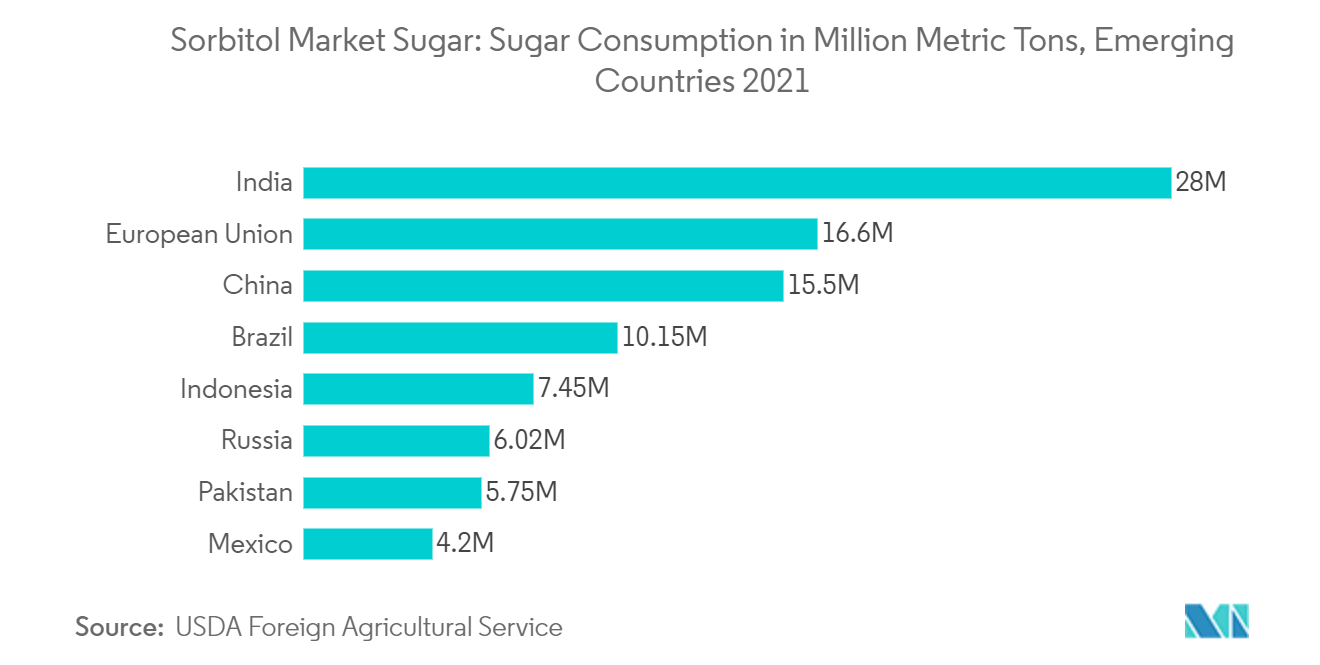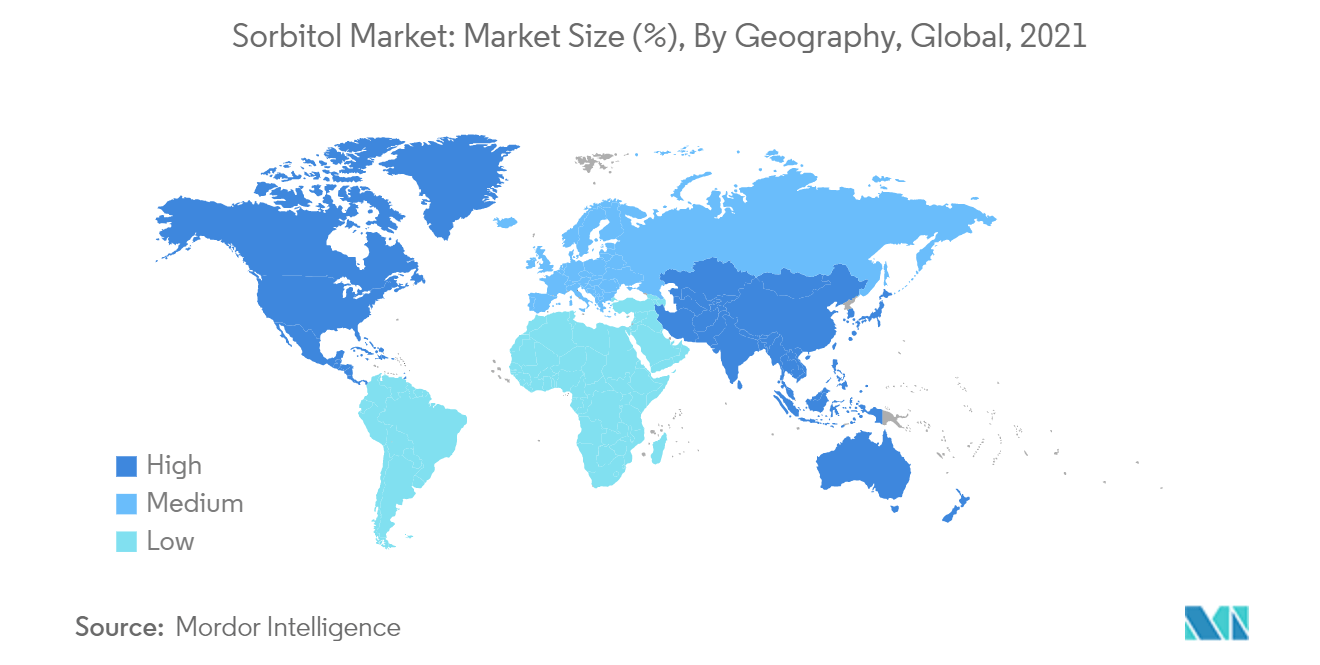Market Trends of Sorbitol Industry
Increasing Demand From Emerging Countries
The shift in preference for convenience, driven largely by urbanization, a growing number of women in the workforce, and rising household incomes, among others, are driving the demand for artificial sweeteners, such as sorbitol, in emerging economies. Sorbitol is mainly used in the manufacture of confectionery, baked goods, and chocolate as a sweetener or moisture-stabilizing agent. The moisture-stabilizing action of sorbitol makes it a preferable choice for products that dry or harden faster, thus maintaining freshness during storage. Heart diseases and health issues are also a major concern in emerging countries. This is likely to drive the market for artificial sweeteners, which is one among the emerging food sweeteners that are non-caloric sweeteners and are 600 times sweeter than sugar.

North America Holds Significant Market Share
Rising concerns among the North American population regarding the adverse health effects caused due to the degradation of packaged goods, like bread rolls, frozen desserts, and chocolates, are expected to promote the usage of sorbitol, as it helps enhance the shelf life of such products. The market in the United States is now identified as saturated, in the case of both natural and artificial sweeteners, thereby leading to a slow pace of growth. Mexico is a high potential market for natural and artificial sweetener products. The country has a high proportion of obese population. The Mexican government's decision to increase the tax on sugary drinks by 10% highlights its serious intent to reduce sugar consumption. Over the review period, sugar consumption was adversely affected by strong campaigns from the government, primarily to spread awareness regarding the harmful effects of obesity. These factors are responsible for the highly competitive nature of the food sweetener market in the country.



